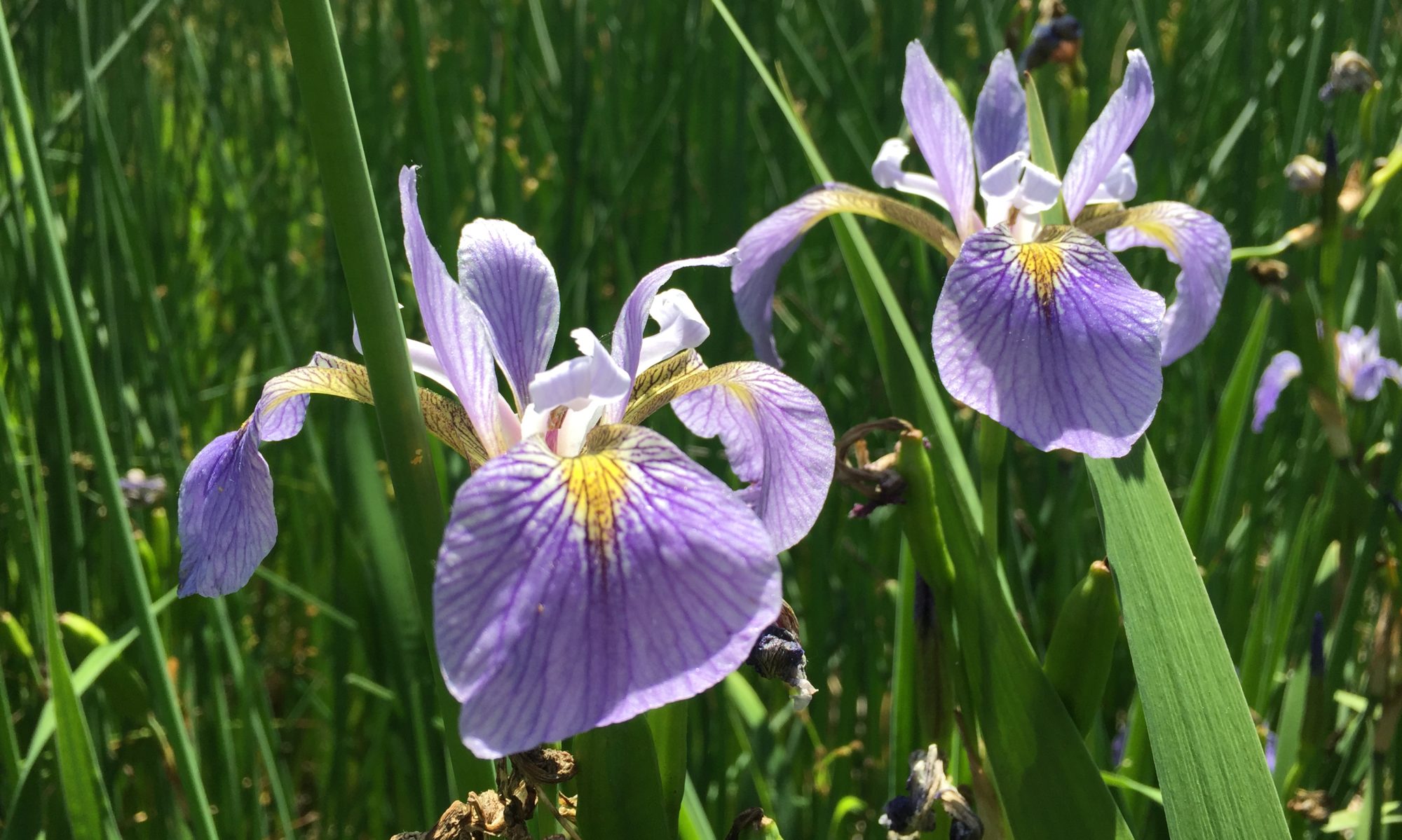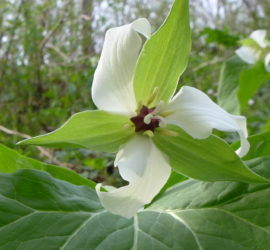IN WEST FAIRMOUNT PARK, JUST STEPS FROM MEMORIAL HALL, HOME OF THE PLEASE TOUCH MUSEUM IN THE CENTENNIAL DISTRICT, IS A RICH RAVINE OF THE SCHUYLKILL RIVER. BLOOMING FLOWERS ABOUND IN THIS BEAUTIFUL HABITAT UNDER STRESS.
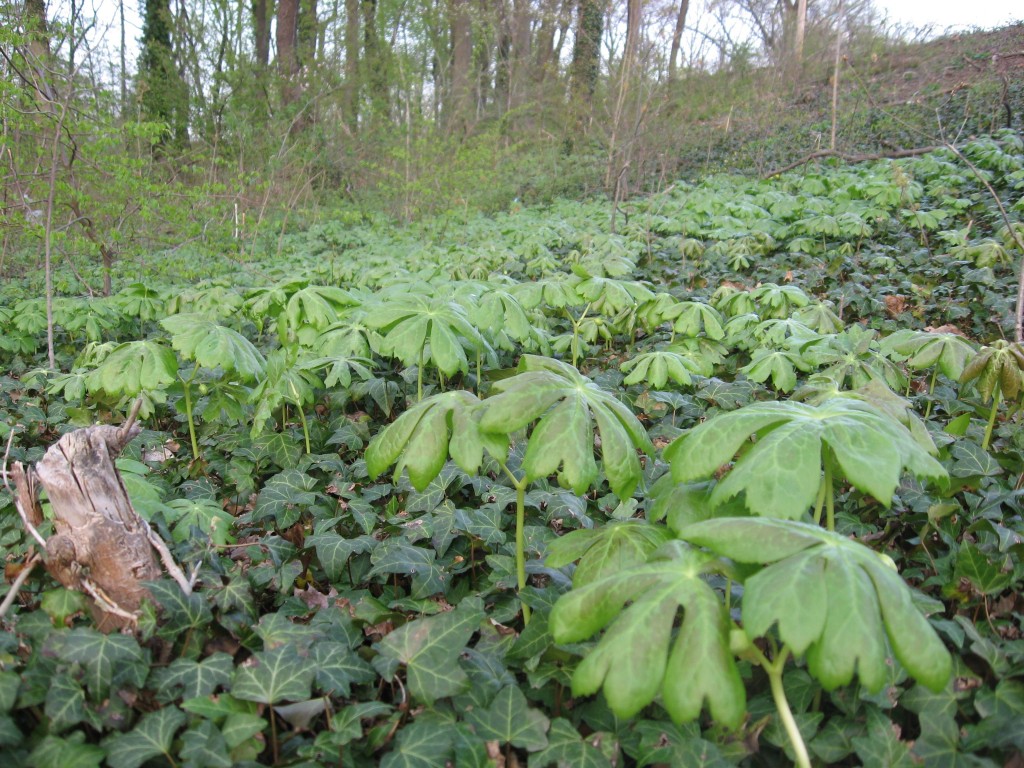
A rich ravine right here in Philadelphia. Â Abundantly growing Mayapples are still holding on amidst the invasive exotic English Ivy (Hedera helix).
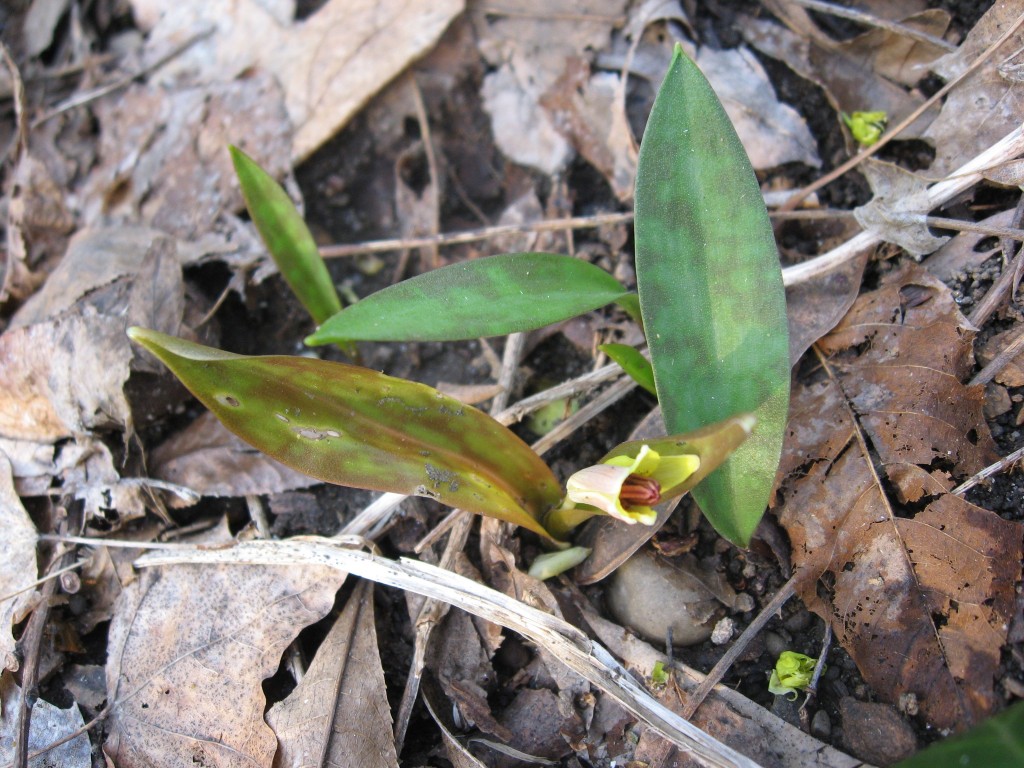
Erythronium americanum, Trout lily, prepares to bloom in the Sweetbriar Vale.
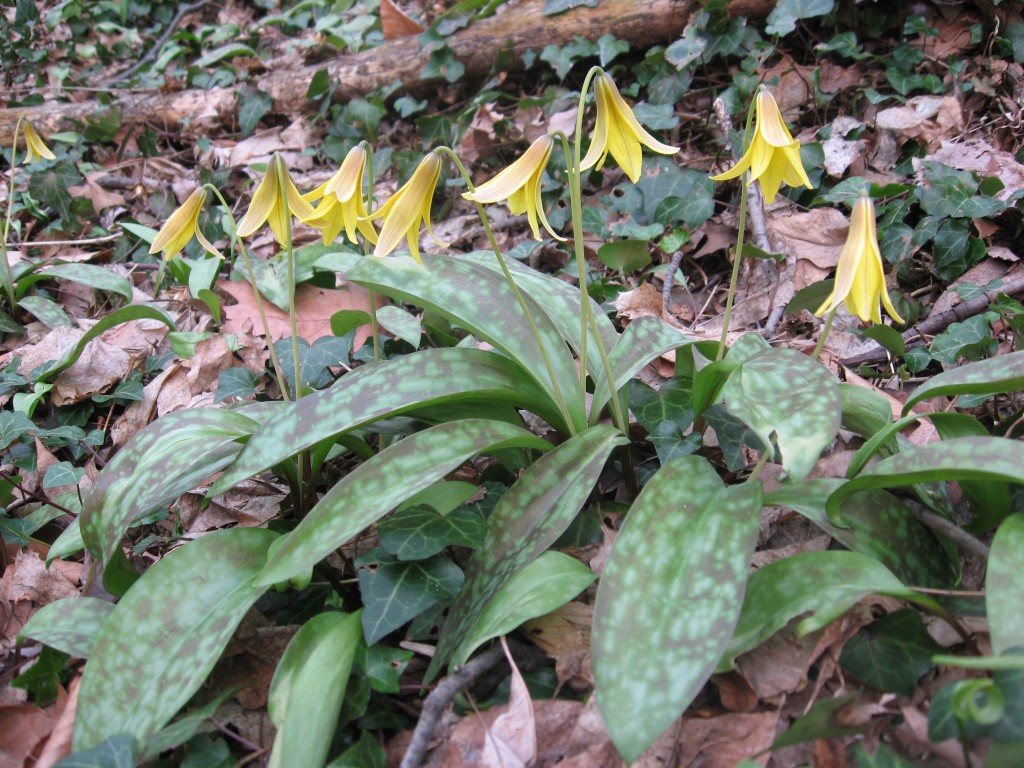
Such a spectacular display of flowers.
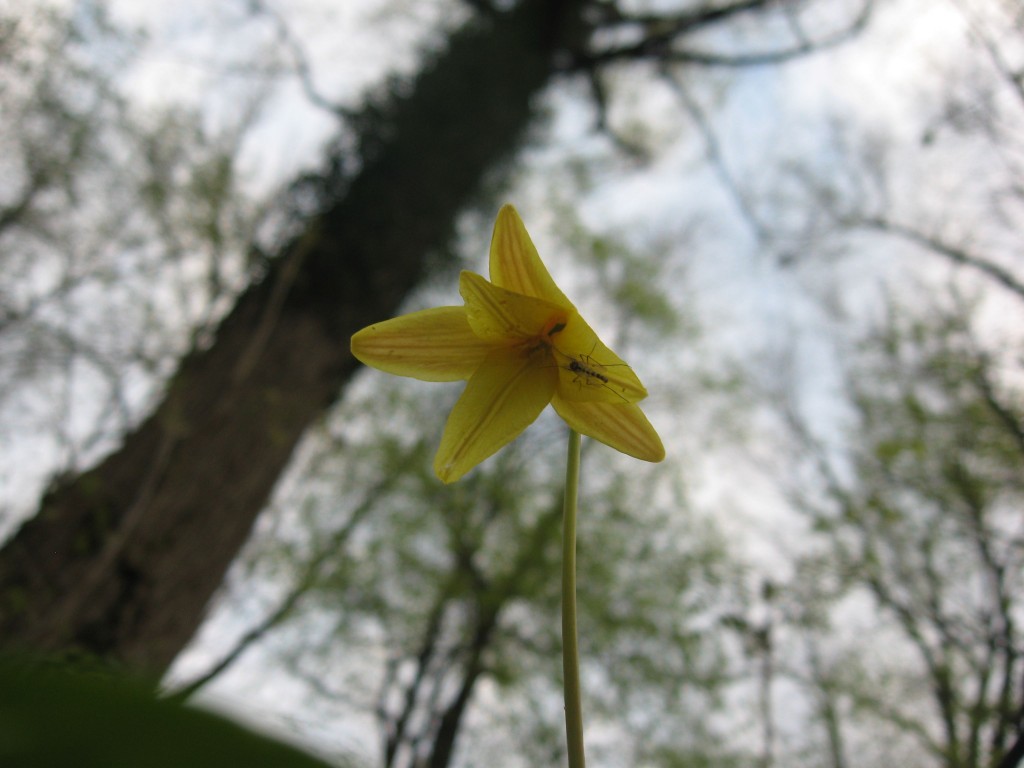
This one is being visited by a pollinating insect. Â This moment is why the plant sent up a flower, so that insects would be attracted to it, and consume its nectar and ultimately the flower’s sticky pollen would be attached to the insect and brought to another flower, where it would be deposited and end up fertilizing the other flower.
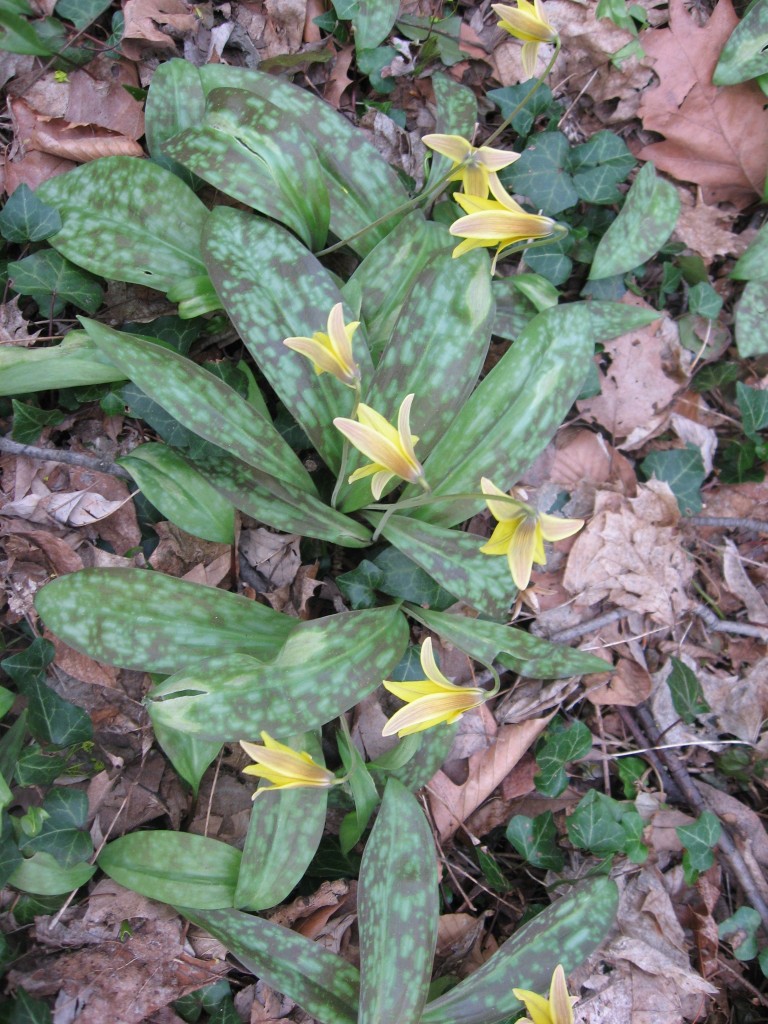
The vale is without any trails, so getting these shots required going along the tops of logs or stepping very carefully to avoid crushing any plants.
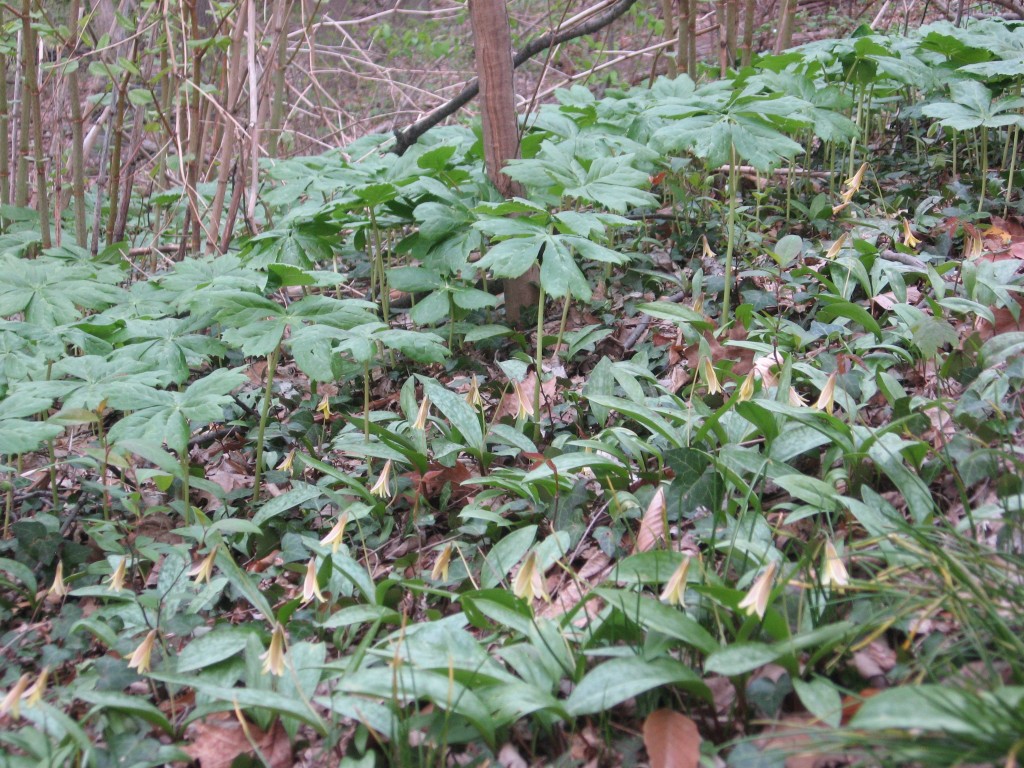
There is a small patch of the exotic invasive Japanese Knotweed growing here, pictured at the top left of this picture. Â About 20 plants. Â Some action was taken and the new canes were broken, which hopefully will slow them down enough until professional help can be secured to control this noxious pest. Â The Japanese knotweed was growing next to the most lush patch of Mayapples and Trout lilies in the whole vale.
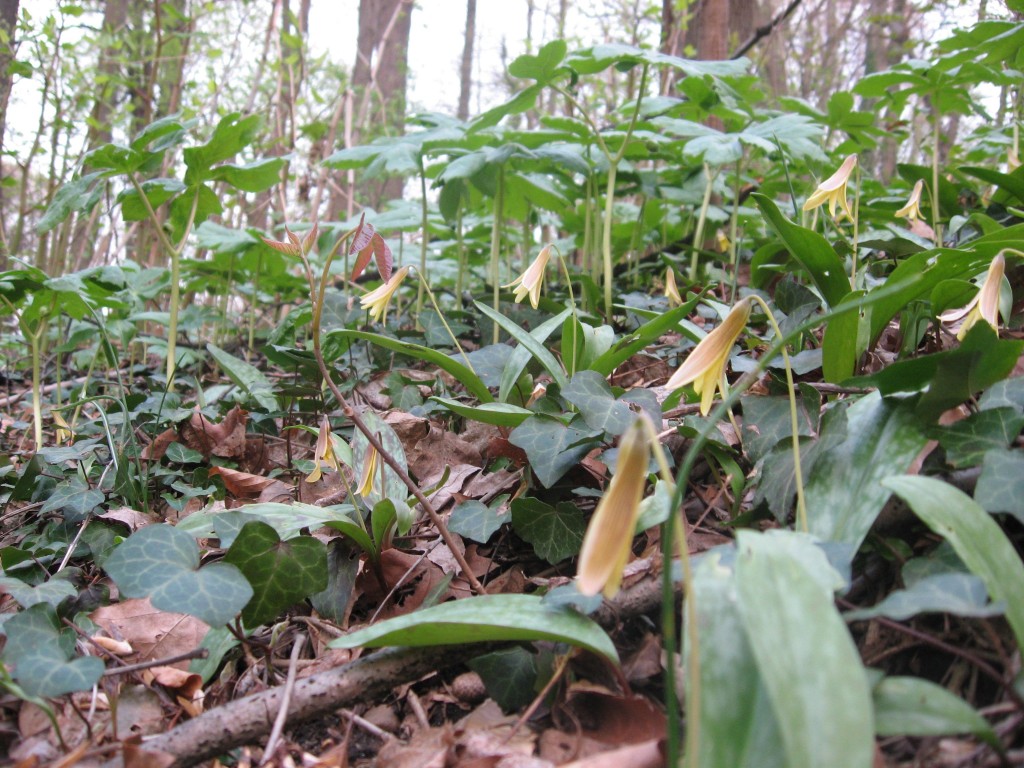
It would be great if the English Ivy was removed, a job that must be done in the winter months or at least after the Spring Ephemerals go dormant.  The Sanguine Root does have a branch office in our locally and nationally designated historic Victorian house just a five minutes walk from the Sweetbriar  Vale in the Parkside neighborhood. Perhaps one day we could take on such a vital project of removing the English ivy. This is not a technically challenging restoration like many of the ones we are taking on in Morris Park.  The Ivy is just pulled up, bagged, and removed from the site.
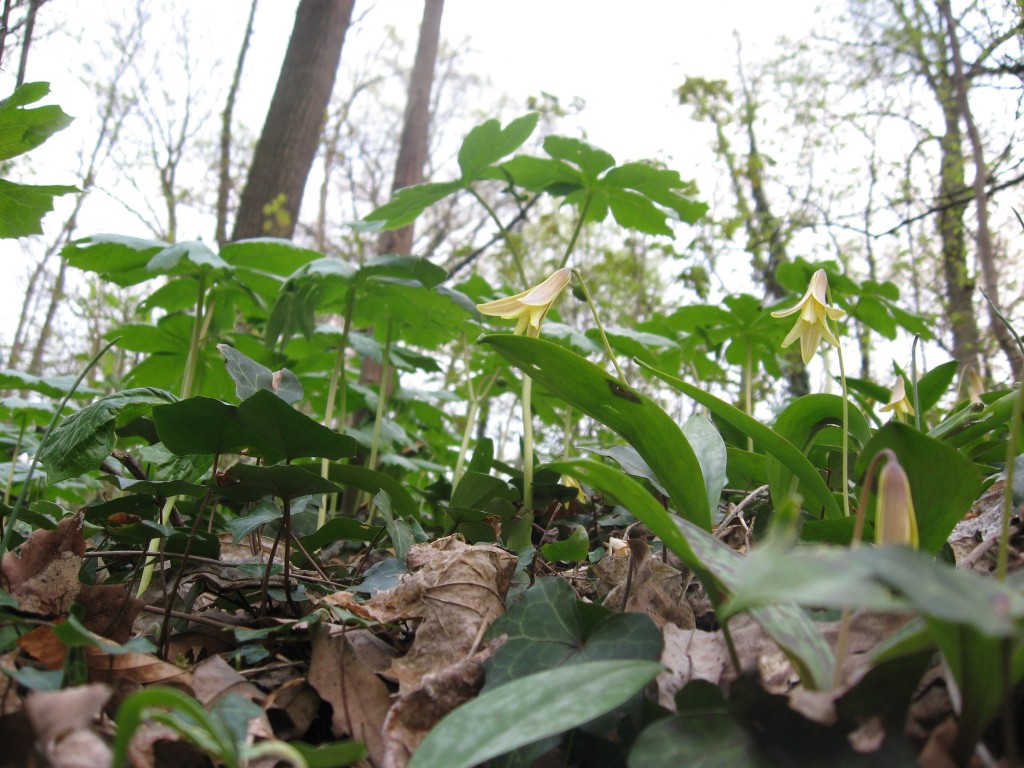
We are also happy that an introduced tree, the Chinese cedar or Chinese toon (Cedrela sinensis) is being removed from the vale thru an initiative of the Parks and Recreation Department of The City Of Philadelphia. Â This tree was beginning to spread at an alarming rate. There are also some Norway maples that are being removed.
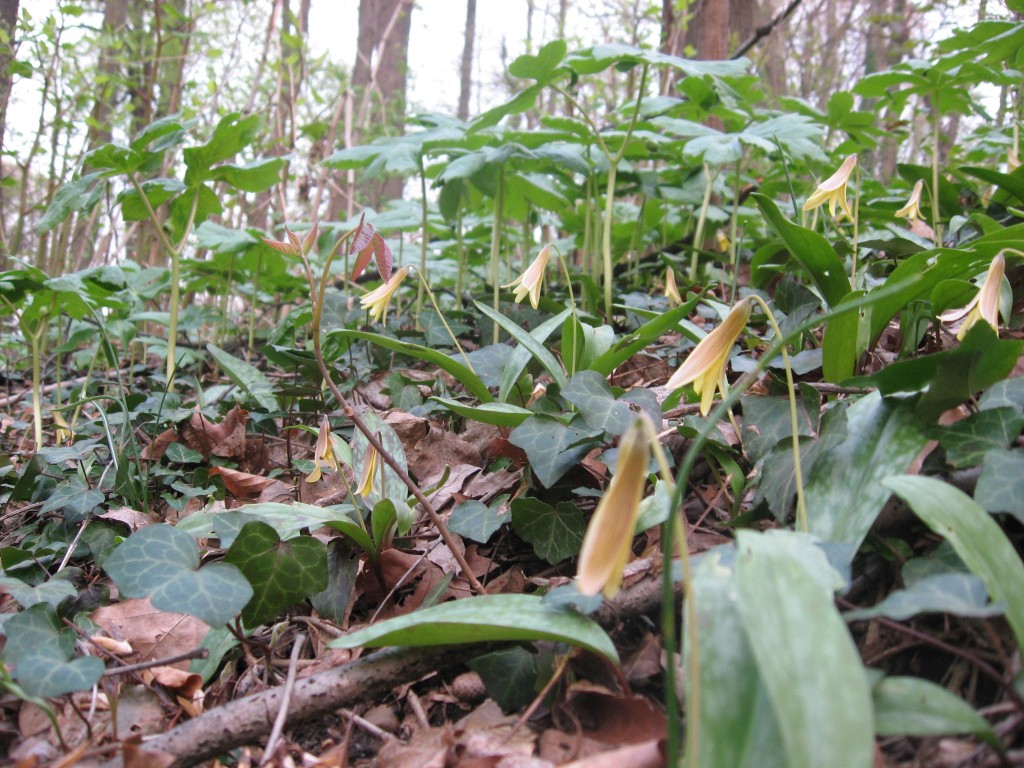
With the Centennial District becoming a family destination, and with its close proximity to the Microsoft School Of The Future, this vale  could become a great way to display a Northeastern Deciduous Forest ecosystem to the general public and students. The potential of this vale to add to the Centennial District is great.  Currently it is used  by the general public as a bathroom for the recreation events that occur in the adjacent ballfields.

The Historic Parkside neighborhood is the next door neighbor of Sweetbriar Vale. Â This is where the Sanguine Root has a branch office. From where this picture was taken was the former site of the Main Exhibition Hall of the 1876 Centennial Exhibition, an historic event that changed American culture and introduced many exotic species to the park, some of which have become problematic pests. The Centennial Exhibition introduced Japanese culture and art to the west, and Americans went wild, from the exotic patterns that found their way on wallpaper, to the exotic ornamental asian plants that found their way into the yards of the well-to do and eventually into the common nursery trade and ultimately into the remaining natural areas where they went wild and took over. Â Â The wallpaper, however is truly exquisite, and can still be obtained from companies that have revived the original Japanesque patterns from old samples found on forgotten, covered-up corners in old houses.
